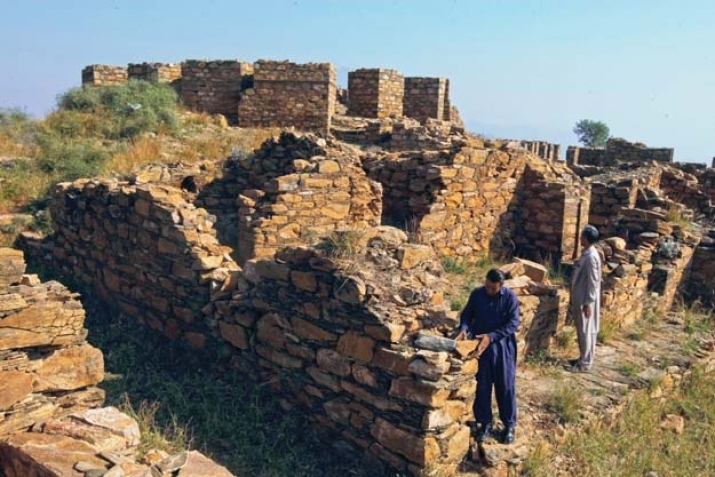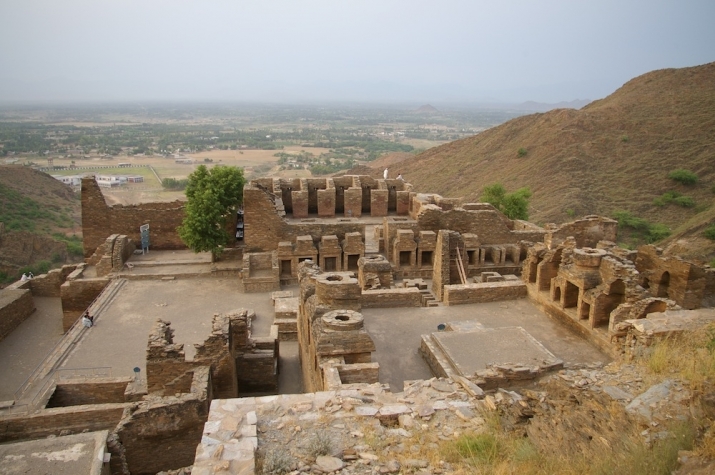NEWS
Devastating Quake Damages Buddhist World Heritage Sites in Pakistan
 October's deadly earthquake caused significant structural damage at Jamal Garhi. From tribune.com.pk
October's deadly earthquake caused significant structural damage at Jamal Garhi. From tribune.com.pkThe deadly 7.5-magnitude earthquake—the strongest in 10 years—that devastated areas of Pakistan and northern parts of neighboring Afghanistan in late October killed some 390 people and wounded thousands of others, leveling homes and other buildings in the process. Archaeologists have said the temblor also caused significant damage to several World Heritage sites, including the Buddhist sites Takht-i-Bahi and Jaulian.
“The quake caused a lot of damage to the sites and artifacts. After assessment, we would compile a complete report about it,” said Dr. Abdul Samad, director of archaeology and museums for the northwestern province of Khyber Pakhtunkhwa. “In Takht-i-Bahi a wall has collapsed and cracks in structure are visible now.” (The Times of India)
Takht-i-Bahi, listed as a UNESCO World Heritage Site in 1980, is a Parthian archaeological site in the city of Mardan in Khyber Pakhtunkhwa. It was originally constructed as a Zoroastrian complex, and then later converted into a Buddhist monastic center. Dated to the 1st century BCE, Takht-i-Bahi is regarded by archaeologists as being particularly representative of the architecture of Buddhist monastic centers from its era.
The Times of India quoted an unidentified eyewitness at Takht-i-Bahi as saying, “The inner chamber developed cracks. The wall of the main assembly hall has leaned on one side.”
Jaulian, in Khyber Pakhtunkhwa’s Haripur District, part of the Taxila UNESCO World Heritage site, contains the ruins of an ancient Buddhist monastery. The ruins, situated on a mountaintop and dating from the 5th century, consist of a main stupa and the monastery and Buddhist university of Jaulian. The structure of the building is similar to that of the Buddhist monastery at the Mohra Muradu archaeological site about half a mile away in Punjab Province.
 Takht-i-Bahi before October's earthquake. From theredlist.com
Takht-i-Bahi before October's earthquake. From theredlist.comSamad said a third site, Jamal Garhi, some 8 miles from Mardan and which has been proposed as a World Heritage Site, had suffered the worst damage as an entire wall had collapsed, damaging nearby structures. Jamal Garhi includes a Buddhist monastery and stupa surrounded by chapels dating from the 1st to the 5th century, a time when Buddhism flourished in this part of the Indian subcontinent.
The newspaper Dawn cited an unidentified source as saying that even rains or a storm could exacerbate the damage without immediate intervention to preserve and reinforce the structure. Mahmood Khan, a worker at Jamal Garhi, said, “One of the ancient walls completely collapsed from the massive earthquake. We are currently busy collecting the scattered stones and placing them in their proper place.” (The Express Tribune)
“Many historical sites and museums were affected by the earthquake. We are still working through damage assessment,” explained Samad. (The Express Tribune)
“I know the damages are huge and even government would not be able to save these sites on its own,” Samad added, noting that state funding for archaeology in Pakistan was extremely limited and it would not be a matter of priority considering the thousands of people left without homes and schools by the quake. “By the time the government allocates funds for repair of the earthquake damaged sites, it would be too late.” (Dawn)
See more
Pakistan quake causes cracks in World Heritage sites (The Times of India)
Jamal Garhi: Tremors unhinge Mardan’s architectural treasure (The Express Tribune)
World Heritage sites developed cracks in Oct 26 quake (Dawn)














